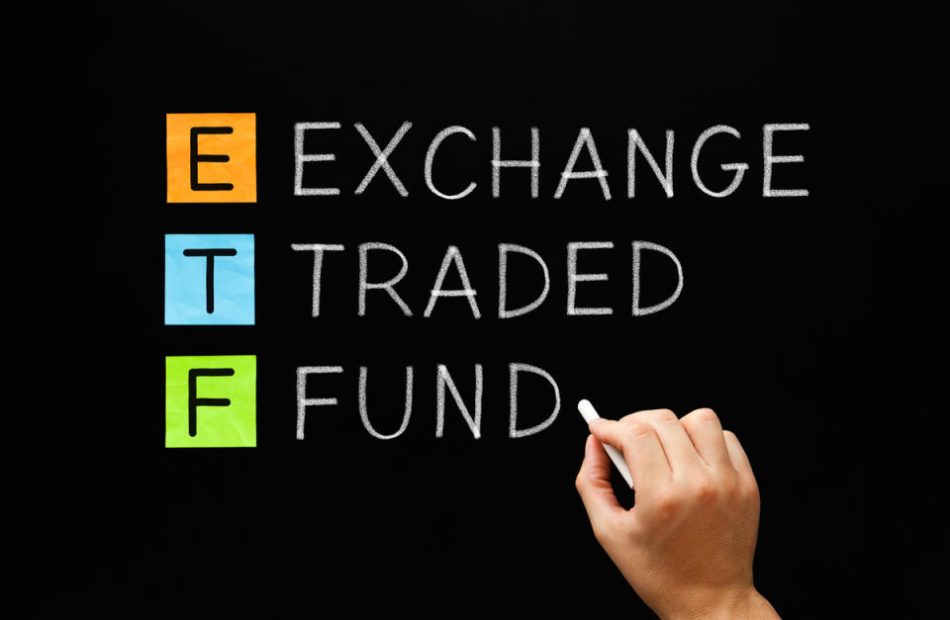This U.S. Town Is Offering $20,000 To Relocate. Here's How To Secure $10,000 In Cash And $10,000 For Renovations
If you’re thinking about moving, Cumberland, Maryland, might just make it worth your while. This small town, located near the Maryland-Pennsylvania border, offers a unique incentive to attract new residents.
Cumberland provides up to $20,000 to families who relocate within its city limits through a new program. Here’s a simple breakdown of how to take advantage of this offer.
Don’t Miss:
What’s On The Table?
Cumberland is offering a total of $20,000, split into two parts:
- $10,000 in Relocation Cash: This is just for moving to Cumberland. The cash will be provided when you close on your new home.
- Up to $10,000 for Home Renovations or a Down Payment: This is a dollar-for-dollar match. If you plan to renovate an existing home or need help with a down payment on a new home within the city, Cumberland will match your investment up to $10,000.
Trending: Will the surge continue or decline on real estate prices? People are finding out about risk-free real estate investing that lets you cash out whenever you want.
To qualify for this program, you need to be at least 18 years old and legally able to work in the U.S. You must be moving from outside Allegany County and plan to live within Cumberland’s city limits.
Employment-wise, you should have full-time remote work, local employment, proof of self-employment, or start a new job in the area. You’ll also need to apply and get approved before relocating, and once approved, you have six months to make the move.
Lastly, you must purchase a home valued at least $150,000 in Cumberland. It must be your primary residence for at least five years, or you’ll have to pay back the money.
See Also: Unlock the hidden potential of commercial real estate —This platform allows individuals to invest in commercial real estate offering a 12% target yield with a bonus 1% return boost today!
Why Cumberland?
Cumberland is a small town with fewer than 20,000 residents but has much to offer. It’s located along the Potomac River and is just a couple of hours from Baltimore, D.C., and Pittsburgh in an area known for its natural beauty. The area has 70,000 acres of outdoor adventure in Allegany County, often called the “Mountainside of Maryland.”
The town has a rich history, a low cost of living, and a welcoming community. It has invested in modernizing its downtown while preserving its small-town charm. Its reliable internet connectivity makes it a good spot for remote workers.
Trending: This city is the clear winner of Zillow’s 2024 Home Value Forecast —No surprise as the number of millionaires there grew by 75% in the last decade.
How to Get Started
If you want to make Cumberland your new home and take advantage of this $20,000 offer, apply for the program. If you’re accepted, you’ll have six months to move. Remember, the program has limited spots, so applying sooner rather than later is wise.
Read Next:
Market News and Data brought to you by Benzinga APIs
© 2024 Benzinga.com. Benzinga does not provide investment advice. All rights reserved.
Forget the 4% Rule? Here's What You Should Really Be Looking at During Retirement.
Everyone’s retirement is different, but we all have a common goal: ensuring our retirement savings last long enough.
The 4% rule is arguably the go-to guideline for determining how quickly you can spend your savings. It states that a retiree can withdraw 4% of their nest egg’s initial value annually, adjusted for inflation. In other words, someone who retires with $1 million would withdraw $40,000 annually, increasing it slightly every year to adjust for inflation.
It’s a good starting point for developing some basic frameworks but is hardly a retirement plan. The problem with painting with broad strokes is that you’ll never fill in the finer details.
There are some considerations when applying the 4% rule and some essential tips to ensure you have the right plan for your needs. Here is what you need to know.
The 4% rule has some issues
I’m not picking on the 4% rule, but people shouldn’t use it to plan their retirement finances. It’s a guideline, not an A-to-Z plan. Here are some potential problems with the 4% rule:
It doesn’t account for market volatility
One of the biggest problems with the 4% rule is it doesn’t account for the market volatility your nest egg could face. The stock market has historically averaged annual returns between 8% and 10%, but those year-to-year swings could be up or down 20% to 30% in any given year.
Suppose something happens and your nest egg takes a big hit the year you retire or shortly afterward; mathematically, you’ll deplete your savings faster. Luck plays a role in investing, which the 4% rule doesn’t account for very well.
Some living expenses could inflate faster
Shelter and healthcare are big-ticket living expenses for most retirees. Both have soared since the pandemic and projecting what those costs may look like years later in life is challenging.
Unfortunately, America’s soaring debt levels mean that future retirees, especially those with decades before retirement, shouldn’t assume that welfare programs like Medicare will cover as much as they do today. Whether healthcare, food, transportation, or housing, essential living expenses could realistically outrun the 4% rule.
It’s not specific to you
Lastly, the 4% is a general guide, not tailored to your financial situation. The typical U.S. worker retires between 63 and 65 with a median nest egg of $200,000. You might have more or less saved or retire earlier or later than the average.
You can get away with sloppy planning early in retirement but could face big problems if your savings dry up years later when you’re too old to work anymore. Additionally, you don’t want to scrimp and save your whole life only to leave a ton of money on the table because you lived too conservatively.
Consider these potential changes
The 4% rule gives you a basic idea of your lifestyle in retirement, but you shouldn’t stop there. Consider these additional tips to help you live your best retirement possible.
Evaluate your timeline
The 4% rule aims to stretch savings for at least 30 years. However, the math may not add up. The average life expectancy in the U.S. is 77 years. In other words, the average person lives roughly 12 to 14 years after retirement. The 4% rule could be too conservative unless you’re retiring early. Consider building a retirement plan with multiple time frames in mind. You want to know your savings will last without overly restricting your lifestyle to the point it hurts your quality of life.
Revisit your investment strategy
Many people retire with less than they had hoped. However, your savings doesn’t stop growing once you retire. You may be able to help your portfolio grow through retirement by adjusting your investment strategy. The 4% rule assumes a portfolio that’s 60% stocks and 40% bonds. You should never take more risk than you’re comfortable with, but getting a little more aggressive could make a big difference in your retirement portfolio over the 10-plus years after you stop working.
Consider dynamic spending
Lastly, the 4% rule assumes you’ll withdraw roughly the same amount each year from your savings. As mentioned before, a market downturn could disrupt your retirement plans. If your finances allow it, consider a dynamic system where you withdraw lower amounts when the market declines and higher amounts when it is up. That could mean some simple lifestyle choices, like saving that big vacation for when the market has a good year or stretching that old car a little longer. These small changes could stretch your nest egg years longer.
Have questions? Consult the pros
Retirement planning is a complex topic. If you have questions or feel overwhelmed by the process, don’t hesitate to consult with a professional advisor. While it will cost you some money to get professional advice, the benefits of an effective retirement plan will far outweigh them.
Retirement planning is the financial foundation for a good chunk of your life. Skimping on preparation or taking retirement lightly only hurts you and can cost you thousands of dollars in taxes and opportunity costs. Knock your retirement plan out of the park by going beyond the 4% rule.
The $22,924 Social Security bonus most retirees completely overlook
If you’re like most Americans, you’re a few years (or more) behind on your retirement savings. But a handful of little-known “Social Security secrets” could help ensure a boost in your retirement income. For example: one easy trick could pay you as much as $22,924 more… each year! Once you learn how to maximize your Social Security benefits, we think you could retire confidently with the peace of mind we’re all after. Simply click here to discover how to learn more about these strategies.
View the “Social Security secrets” »
The Motley Fool has a disclosure policy.
Forget the 4% Rule? Here’s What You Should Really Be Looking at During Retirement. was originally published by The Motley Fool
Illinois trucking company with 480 drivers abruptly ceases operations
An Illinois-based trucking and logistics company, which contracted with the U.S. Postal Service to haul mail and had over 650 employees, including more than 480 drivers, abruptly ceased operations Thursday, according to sources familiar with the closure.
Former truck drivers for Midwest Transport Inc. (MTI), headquartered in Robinson, Illinois, told FreightWaves that they received telephone calls from their regional managers late Thursday notifying them the company was winding down operations.
As of publication on Friday, MTI has not issued a formal statement about what led to the closure. However, FreightWaves confirmed with some former senior managers and truck drivers who worked for the mail contractor that the company was ending operations. They did not want to be named in the article for fear of retaliation.
MTI, founded in 1980, operated key terminals in Greenup, Illinois; Harmony, Pennsylvania; Memphis, Tennessee; and two terminals in Tampa and Jacksonville, Florida, according to its website.
MTI had over 480 drivers and 428 power units, according to the Federal Motor Carrier Safety Administration’s SAFER website.
FMCSA data shows the company’s trucks had been inspected 244 times, and 65 had been placed out of service for a 27% out-of-service rate over the preceding 24-month period. That is significantly higher than the industry’s national average of around 22%.
MTI’s drivers had been inspected 564 times, and 16 were placed out of service over a two-year period, resulting in a nearly 3% out-of-service rate. That is less than half the industry’s national average of 7%, according to FMCSA.
The trucking company had 21 injuries and 42 tow-aways over the past 24 months.
According to the SAFER database, MTI was cited for acute/critical violations in two categories: controlled substances/alcohol and driver fitness.
A check on SAFER shows that MTI’s common, contract and broker authorities remain active. MTI had two compliance reviews on July 7 and July 25, according to FMCSA data.
As of publication Friday, MTI had not filed a notice of its impending closure in Illinois, Tennessee, Pennsylvania or Florida.
One longtime former MTI driver said he was surprised by the news the company was ceasing operations but said that drivers had started receiving notices over the past few months to ensure their log books were certified after each run and to watch their speed and improve their on-time performance.
“I don’t know what happened because we had a lot of postal contracts all over the U.S.,” a former MTI driver told FreightWaves. “I [don’t know if] the USPS is just finding out like us [that] the mail will be sitting on the docks on Monday.”
A media spokesperson with the Postal Service did not immediately return FreightWaves’ request for comment.
This is a developing story.
Do you have a news tip or story to share? Send Clarissa Hawes an email or message @cage_writer on X, formerly Twitter. Your name will not be used without your permission.
The post Illinois trucking company with 480 drivers abruptly ceases operations appeared first on FreightWaves.
US IRS enforcement efforts recover $1.3 billion in unpaid taxes, Treasury says
WASHINGTON (Reuters) – The U.S. Treasury and Internal Revenue Service said on Friday that they have recovered $1.3 billion in unpaid taxes from wealthy individuals under new enforcement initiatives funded by $60 billion in IRS modernization spending from the climate-focused Inflation Reduction Act.
WHY IT’S IMPORTANT
Republicans in Congress have long vowed to rescind the 10-year IRS funding passed in 2022, arguing that it would unfairly harass Americans on their taxes. Republican presidential candidate Donald Trump vowed on Thursday to rescind all unspent funds from the Inflation Reduction Act, which include billions of dollars earmarked for the IRS.
The IRS has planned to spend about $10.6 billion of those funds through end of the 2024 fiscal year, which concludes on Sept. 30, leaving nearly $50 billion that could be recouped. But budget forecasters say that doing so would increase the federal budget deficit by more than $100 billion over a decade because the agency would forego stepped-up enforcement.
BY THE NUMBERS:
The Treasury said that in the first six months of a new initiative to target 125,000 wealthy individuals who have not filed tax returns since 2017, it has collected $172 million from 21,000 non-filing taxpayers.
Another initiative to target wealthy individuals with more than $1 million in income and $250,000 in unpaid, recognized tax debts has brought in $1.1 billion to Treasury coffers.
KEY QUOTES
U.S. Treasury Secretary Janet Yellen said the audit rate for millionaires fell by 80% due to budget cuts at the IRS.
“During the previous (Trump) administration, as audit rates on high-income taxpayers fell, the share of audits on taxpayers with incomes under $200,000 increased,” Yellen said in remarks to be delivered at an IRS service center in Austin, Texas. “In 2019, the top one percent of Americans was estimated to owe over one-fifth of unpaid taxes, leaving ordinary Americans to shoulder the burden.”
(Reporting by David Lawder; Editing by Alex Richardson)
History Says This 1 Monster ETF Will Beat the S&P 500 Between Now and 2030
Undoubtedly, the S&P 500 is the top index that investors look at to assess how the stock market is performing. It provides a pretty accurate view, given it’s a benchmark of 500 large and profitable companies.
In the past decade, the S&P 500 has generated a total return of 235%, which turned a $10,000 investment into $33,500 today. That’s an impressive gain.
However, I believe there’s one monster exchange-traded fund (ETF) that will beat the S&P 500 between now and 2030. Here’s the investment vehicle you don’t want to miss.
Concentrated in specific sectors
The S&P 500 has 11 different sectors, so investors naturally gain broad exposure to all parts of the economy. However, some sectors have performed better, such as information technology.
This sector is featured prominently in the Invesco QQQ Trust (NASDAQ: QQQ), making up 51% of its holdings. The QQQ is a fund that tracks the performance of the 100 largest non-financial companies that trade on the Nasdaq stock exchange, providing more niche exposure to certain pockets of the market.
Over the last 10 years, the QQQ has produced a fantastic total return of 412%, which would have more than quintupled your starting capital. However, past performance is never a guarantee of future returns. In my opinion, this ETF is poised to continue outperforming the S&P 500 over the next six or so years.
The QQQ is heavily focused on some of the most innovative and disruptive businesses on the planet. And generally, these are the types of companies that can help drive strong portfolio gains.
Ahead of the curve
The ETF’s top holdings are names that you’re likely familiar with. The “Magnificent Seven” are featured prominently. Apple, Microsoft, Nvidia, Alphabet, Amazon, Meta Platforms, and Tesla combined represent 42% of the portfolio’s assets. The performance of these stocks has a big influence on the QQQ’s trajectory.
In recent years, that’s been a major benefit. These businesses gain from very broad secular trends that are shifting the economic landscape. Areas like cloud computing, digital advertising, digital payments, streaming entertainment, and electric vehicles have helped lift the QQQ higher.
We also can’t forget about artificial intelligence (AI), the revolutionary technology that everyone can’t seem to get enough of. Owning the QQQ means that investors don’t have to try and pick single stocks that will be winners of the AI boom. The ETF provides broad exposure to basically capture the entire trend.
Is now a good time to invest?
As of this writing, the QQQ trades 6% off its peak level from July of this year. The current dip seems like the perfect opportunity to put some money to work. Of course, that’s after you’ve set up an emergency fund and have eliminated all high-interest debt.
Another smart strategy is to dollar-cost average. Instead of trying to accurately predict when the market will bottom out, investors can simply add savings to the QQQ on a regular basis, say every month or quarter. This eliminates market timing and helps encourage continuous investment.
By owning the QQQ, investors have a legitimate shot at beating the S&P 500 between now and 2030, and maybe beyond that. Moreover, because the expense ratio of 0.2% is compelling, more of the returns generated are actually yours at the end of the day.
This winning combination of high return potential, low costs, and a passive strategy is hard to beat. That makes buying the QQQ an easy decision.
Should you invest $1,000 in Invesco QQQ Trust right now?
Before you buy stock in Invesco QQQ Trust, consider this:
The Motley Fool Stock Advisor analyst team just identified what they believe are the 10 best stocks for investors to buy now… and Invesco QQQ Trust wasn’t one of them. The 10 stocks that made the cut could produce monster returns in the coming years.
Consider when Nvidia made this list on April 15, 2005… if you invested $1,000 at the time of our recommendation, you’d have $650,810!*
Stock Advisor provides investors with an easy-to-follow blueprint for success, including guidance on building a portfolio, regular updates from analysts, and two new stock picks each month. The Stock Advisor service has more than quadrupled the return of S&P 500 since 2002*.
*Stock Advisor returns as of September 3, 2024
John Mackey, former CEO of Whole Foods Market, an Amazon subsidiary, is a member of The Motley Fool’s board of directors. Suzanne Frey, an executive at Alphabet, is a member of The Motley Fool’s board of directors. Randi Zuckerberg, a former director of market development and spokeswoman for Facebook and sister to Meta Platforms CEO Mark Zuckerberg, is a member of The Motley Fool’s board of directors. Neil Patel and his clients have no position in any of the stocks mentioned. The Motley Fool has positions in and recommends Alphabet, Amazon, Apple, Meta Platforms, Microsoft, Nvidia, and Tesla. The Motley Fool recommends Nasdaq and recommends the following options: long January 2026 $395 calls on Microsoft and short January 2026 $405 calls on Microsoft. The Motley Fool has a disclosure policy.
History Says This 1 Monster ETF Will Beat the S&P 500 Between Now and 2030 was originally published by The Motley Fool
Orkes To Showcase Workflow Orchestration at Gartner Global Conferences and Drive Industry Adoption of New Category of Tools
CUPERTINO, Calif., Sept. 06, 2024 (GLOBE NEWSWIRE) — Orkes, a provider of advanced microservices orchestration tools, today announced it will elevate its global presence with its participation in two major Gartner conferences to help define the future of workflow orchestration and drive industry advancements in cloud and AI use.
Orkes is working to create a new category in workflow orchestration and establish a dedicated Gartner Quadrant to address the shifting needs of the industry. Orkes Conductor is a platform for building distributed applications and AI agents that allows developers to build highly scalable, resilient applications and agents by orchestrating their code, microservices and eventing systems. Conductor addresses the growing need for tailored solutions that enhance how developers design, code, and manage workflows with its flexible orchestration tools. This initiative is designed to help businesses to scale more effectively while minimizing disruptions.
The company will participate at the Gartner Application Innovation & Business Solutions Summit and the Gartner IT Symposium/Xpo™ 2024 Conference, both pivotal platforms where industry leaders will discuss the future of software engineering, application innovation and generative AI. Orkes will contribute strategic insights and practical advice while navigating emerging trends and technologies for enterprise and mid-sized companies.
“Orkes is actively shaping new market categories with our Conductor platform,” said Jeu George, CEO and co-founder of Orkes. “Our solutions are crucial for businesses managing complex workflows and AI integrations. As we participate in these global conferences, we see increased global adoption and significant interest from major enterprises relying on Orkes for effective orchestration and operational efficiency.”
At the Gartner Application Innovation & Business Solutions Summit in London, UK, on September 9-10, 2024, find Orkes at Booth 503. Join their session, “Integrate AI into Apps with Netflix Conductor,” on September 10, from 1:30 PM to 1:50 PM BST.
Orkes will also be at the Gartner IT Symposium/Xpo™ 2024 in Queensland, Australia, on September 9-11, 2024, at Booth 1016.
About Orkes
Orkes is the fastest way to scale distributed systems across microservices, APIs, AI models, and event-driven architectures for any language, framework, and level of complexity. Founded in 2021 by seasoned product and engineering leaders from Google, Netflix, AWS, and Microsoft, Orkes provides an enterprise-grade, cloud-hosted version of the popular Conductor open-source platform used by Fortune 100 companies and international corporations. Backed by Battery Ventures, Nexus Venture Partners and Vertex Ventures US, the company is headquartered in Cupertino, CA. Learn more at www.orkes.io.
Media Contact
Skyya PR
orkes@skyya.com
A photo accompanying this announcement is available at https://www.globenewswire.com/NewsRoom/AttachmentNg/23bbe6ec-8d32-4dfb-9fd5-d853152be7df

Market News and Data brought to you by Benzinga APIs
© 2024 Benzinga.com. Benzinga does not provide investment advice. All rights reserved.
Plans for Indoor Entertainment Venue along East Riverside Emerge
Mid-size, state-of-the-art facility to join Austin’s live music scene
AUSTIN, Texas, Sept. 5, 2024 /PRNewswire/ — A state-of-the-art, mid-size, indoor entertainment venue is being planned for a mixed-use project on East Riverside Drive.
The venue will feature approximately 65,000 square feet and offer an ideal spot for a diverse range of live shows, community events, and special events. It will be located at the Northwest corner of East Riverside Drive and Crossing Place, serving as an anchor to the first phase of River Park, a mixed-use project being master developed in a joint venture between Partners Group, acting on behalf of its clients, and Austin-based Presidium.
“Live music is in Austin’s DNA and we’re excited to bring this opportunity forward together with several partners,” said Michael Piano, vice president of development for Presidium.
The indoor entertainment facility will be nestled into the first phase of River Park, surrounded by residential buildings, ground floor retail, streetscapes, and a public park.
“This new venue embodies our transformational approach to real estate investing. We’re creating a unique space for Austin that will offer long term value for the community,” said Matt Bosquez, Member of Management, Real Estate Americas, at Partners Group, which is one of the largest firms in the global private markets industry.
Piano added: “We have carefully vetted the path forward and are committed to the vision of creating a thriving mixed-use ecosystem. This will start the project off with a series of dynamic gathering spaces for all to enjoy.”
To bring the venue to life, Presidium has entered into an agreement with a third-party developer and operator, ensuring high building standards and an exceptional entertainment experience. While the partners cannot be disclosed at this time, the vision is to host local and national performances, community programs, and special events that enhance the cultural offerings and community connections in the East Riverside neighborhood. Piano adds that there is pent-up market demand in Austin for a mid-size, indoor venue, which meets the needs of rising stars and bridges an existing market gap between smaller, local venues and larger arenas.
The overall vision for River Park calls for a mix of office, retail, entertainment, public parks, trails, and residential, including Affordable Housing. Located just east of Oracle’s Austin headquarters, the 109 acres are bordered by Roy G. Guerrero Colorado River Metro Park, East Riverside Drive, Pleasant Valley Road and Country Club Creek. More than 30 acres of publicly accessible open space, parkland and urban trails leading into Guerrero Park are anticipated. The site will also integrate with Capital Metro’s existing and planned multi-modal transportation network.
A timeline for the music venue has yet to be determined, while build out for the entire River Park development is anticipated to take 10 to 20 years.
About Partners Group
Partners Group is one of the largest firms in the global private markets industry, with around 1,800 professionals and approximately USD $150 billion in assets under management. The firm has investment programs and custom mandates spanning private equity, private credit, infrastructure, real estate, and royalties. With its heritage in Switzerland and its primary presence in the Americas in Colorado, Partners Group is built differently from the rest of the industry. The firm leverages its differentiated culture and its operationally oriented approach to identify attractive investment themes and to build businesses and assets into market leaders. For more information, please visit www.partnersgroup.com or follow us on LinkedIn.
About Presidium
Founded in 2003, Presidium is a Texas-based real estate developer, owner, and operator with a 20-year operating history and an existing real estate portfolio totaling approximately $2 billion assets under management (AUM). We represent a spectrum of disciplines, including acquisitions, development, property management, asset management, construction, law, finance, accounting, special servicing, and public-private partnerships. At Presidium, our mission is to craft vibrant and unique communities, deliver exceptional returns for our partners, and nurture a collaborative, supportive atmosphere for our employees. Together, we strive to make a meaningful impact on the lives we touch and the neighborhoods we enrich. For more information about Presidium, visit www.presidiumre.com.
![]() View original content:https://www.prnewswire.com/news-releases/plans-for-indoor-entertainment-venue-along-east-riverside-emerge-302239777.html
View original content:https://www.prnewswire.com/news-releases/plans-for-indoor-entertainment-venue-along-east-riverside-emerge-302239777.html
SOURCE Presidium
© 2024 Benzinga.com. Benzinga does not provide investment advice. All rights reserved.
1 Stock I Wouldn't Touch With a 10-Foot Pole — and Here's Why
There’s a lot to like about Cava Group (NYSE: CAVA). The Mediterranean-style restaurant chain is growing like a wildfire while generating positive bottom-line profits. I understand why many investors are excited about this thrilling growth story, sending Cava’s stock price 152% higher in the last 52 weeks.
But I’m not going anywhere near the “buy” button for Cava stock in the foreseeable future. This soaring stock is flying too close to the sun and looks overdue for a sharp price correction.
That’s life in the risky and competitive restaurant industry.
Why investors love Cava’s growth story
Again, I get it. Cava opened 62 net new restaurants over the last year, including 18 in the recently reported second quarter. Menu prices are up by 4.9% in the same span in order to tamp down inflation-based increases in ingredient costs, and foot traffic per store rose by 9.5%.
The company generated $19.7 million of net income and $22.7 million in free cash flows in the second quarter. Investors get thrilling growth and an 8% net profit margin in a single package — where do I sign up?
That’s why Cava’s shares are soaring since entering the public stock market in June 2023. Unfortunately, I don’t think the business can support these lofty stock prices.
Cava’s high valuation ratios are concerning
That brings me to the uncomfortable bit.
Cava’s stock is trading at unreasonably high valuation ratios. Yes, it’s great to see that the company is profitable but it shouldn’t be worth 15 times trailing sales, 308 times earnings, or 1,155 times free cash flows.
Those are soaring ratios in any industry, and especially in the ultra-competitive restaurant sector. True giants like McDonald’s (NYSE: MCD) and Yum! Brands (NYSE: YUM) come with single-digit price to sales ratios and profit-based valuation multiples in the 20x to 30x range. Even the fast-growing Chipotle Mexican Grill (NYSE: CMG) chain nearly fits that modest valuation profile.
Financial risks in a crowded market
Just for fun, let’s run Cava through the rigors of a discounted cash flow (DCF) calculation. This valuation method estimates a stock’s value based on the amount of cash the underlying business might generate for shareholders in the long run. Using some incredibly generous estimates for Cava’s potential cash flow growth, I still get a “fair value” estimate of just $5 per share. Yes, it’s difficult to squeeze reasonable numbers out of the DCF equation when the cash profits are just above breakeven, but that’s kind of my point here. How do you pin a fair price tag on such a risky and barely profitable business?
And the ditches of Wall Street are littered with the remains of formerly high-flying restaurant stocks. Many were seen as “the next Chipotle,” just like Cava, with ambitious expansion plans to match. In many cases, they ended up stumbling over costly growth plans at the wrong time.
Remember Zoës Kitchen, for example? That was another high-growth Mediterranean restaurant concept, opening dozens of new locations per year in its heyday with long-term plans of a nationwide presence. Well, those plans didn’t work out and Cava bought what was left of Zoës Kitchen in 2018. Some of its locations have been converted into Cava restaurants and others simply shut down.
When would I consider buying Cava stock?
In all fairness, I’m not terribly keen on restaurant stocks in general. The industry is too packed with rivals, all reaching for the same consumer wallets in different ways. My only exposure to this fracas is Toast (NYSE: TOST), a maker of restaurant management hardware and software designed to save operating costs and improve their efficiency. This industry needs all the cost-saving help it can get.
And I’m a long way away from adding any Cava stock to that portfolio. I might reconsider if the unchecked growth continues without resorting to dilutive stock sales or risky debt papers along the way — but even then, only at a much lower valuation.
So I wish the best of luck to Cava and its investors, but I’m not even a little bit tempted to own the stock right now. Come back in a few years with sustained growth and a milder share price, and maybe I’ll finally reach for that ten-foot pole.
Should you invest $1,000 in Cava Group right now?
Before you buy stock in Cava Group, consider this:
The Motley Fool Stock Advisor analyst team just identified what they believe are the 10 best stocks for investors to buy now… and Cava Group wasn’t one of them. The 10 stocks that made the cut could produce monster returns in the coming years.
Consider when Nvidia made this list on April 15, 2005… if you invested $1,000 at the time of our recommendation, you’d have $661,779!*
Stock Advisor provides investors with an easy-to-follow blueprint for success, including guidance on building a portfolio, regular updates from analysts, and two new stock picks each month. The Stock Advisor service has more than quadrupled the return of S&P 500 since 2002*.
*Stock Advisor returns as of September 3, 2024
Anders Bylund has positions in Toast. The Motley Fool has positions in and recommends Chipotle Mexican Grill and Toast. The Motley Fool recommends Cava Group and recommends the following options: short September 2024 $52 puts on Chipotle Mexican Grill. The Motley Fool has a disclosure policy.
1 Stock I Wouldn’t Touch With a 10-Foot Pole — and Here’s Why was originally published by The Motley Fool
US probes top airlines' frequent flyer programs for unfair practices
By David Shepardson and Rajesh Kumar Singh
WASHINGTON/CHICAGO (Reuters) -The U.S. Transportation Department (DOT) said on Thursday it is opening an inquiry into the four largest U.S. air carrier rewards and frequent flyer programs to ensure consumers do not face unfair, deceptive, or anticompetitive practices.
Transportation Secretary Pete Buttigieg sent letters to American, Delta, Southwest and United Airlines, ordering them to provide records and submit reports answering detailed questions on their rewards programs.
The Department is reviewing how consumers are “impacted by the devaluation of earned rewards, hidden or dynamic pricing, extra fees, and reduced competition and choice.”
Reuters first reported in December that DOT had begun scrutinizing the frequent flyer programs of major U.S. airlines for potential deceptive or unfair practices.
DOT and the Consumer Financial Protection Bureau held a public hearing in May on airline loyalty programs, while some lawmakers have also scrutinized the programs.
Buttigieg said the department is seeking “more specific data to better understand the largest rewards programs and identify potential competition or consumer protection issues or risks.”
Customers often complain airlines have been raising the bar to earn perks associated with these programs. The U.S. Congress last year considered but did not mandate requiring airlines to provide 90 days notice before devaluing frequent flyer program points.
Trade group Airlines for America, however, said U.S. airlines are transparent about frequent flyer programs “and policymakers should ensure that consumers can continue to be offered these important benefits.”
U.S. carriers relied on these programs, which have tens of millions of members, for revenue and to raise funds during the COVID-19 pandemic when travel demand plunged.
Loyalty programs of Delta, United and American were each valued more than $20 billion last year, according to consulting firm On Point Loyalty.
Delta said it has received the DOT’s inquiry and will respond.
Southwest said its flexible rewards program benefits have resulted in the carrier doubling the industry average of seats booked with points, while United and American declined comment.
(Reporting by David Shepardson in Washington and Rajesh Kumar Singh in ChicagoEditing by Chris Reese and Sandra Maler)









